Episode 237: HubSpot Tasks, Proactive versus Reactive Marketing
Welcome to HubShots Episode 237: HubSpot Tasks, Proactive versus Reactive Marketing This edition we dive into:
If you're new to HubSpot, we guide you on where to start, how to do it right, and train you to make the most of the platform.
Review your HubSpot portal to uncover issues, spot growth opportunities, and ensure you're maximising its potential.
Unlock business growth with automation and attribution. Implement best practices and execute marketing campaigns.
HubSpot On-Demand
HubSpot Training
HubSpot Websites
HubSpot Campaigns
Virtual HubSpot Manager
31 min read
XEN Systems 5 April 2021 12:56:54 PM
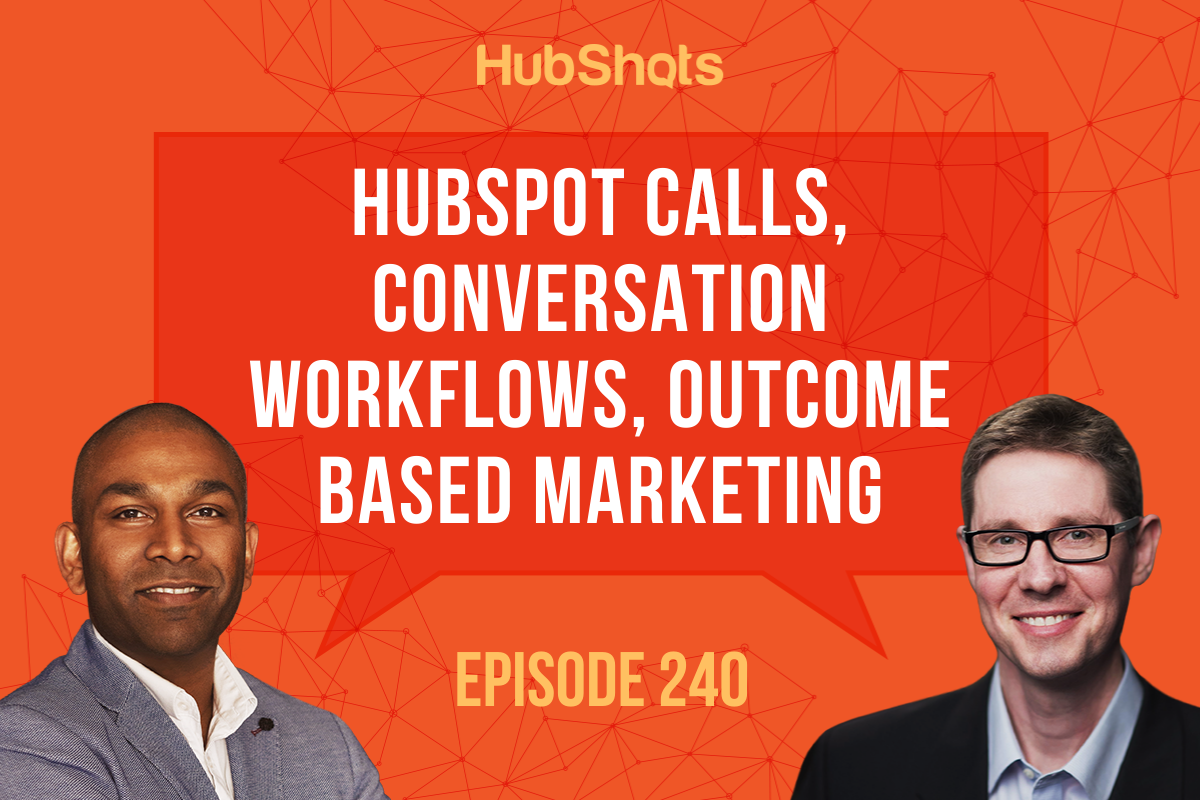
This edition we dive into:
You can listen to this episode of the show here.
Did a colleague forward this episode to you? Sign up here to get yours every Friday.
Please forward this on to your work colleagues.
Recorded: Monday 29 March 2021 | Published: Friday 02 April 2021
Brian Halligan is on the mend after having 34 screws added in variou places - you can wish him well on his Twitter update. And if you missed what the original story was with his snowmobile accident you can catch up with Episode 238 a few weeks ago.
We’ll have the sign up form ready in early April, planning for our first cohort in May.
We’re taking next week off from recording (since it will be Easter, and that’s a time of even more public holidays here in Australia). It will be a good chance to recharge.
Internally I switch between the value of taking time off to recharge versus enforcing consistency… which is better?
As a quasi-compromise, this week’s is a bumper episode - longer than usual - you may want to consume it in two sittings over the holiday weekend. Lots of extra resources and interesting items at the end of the show.

Here’s a few quick items of interest we noticed:
Here’s the Trigger criteria options for a Conversation based workflow:
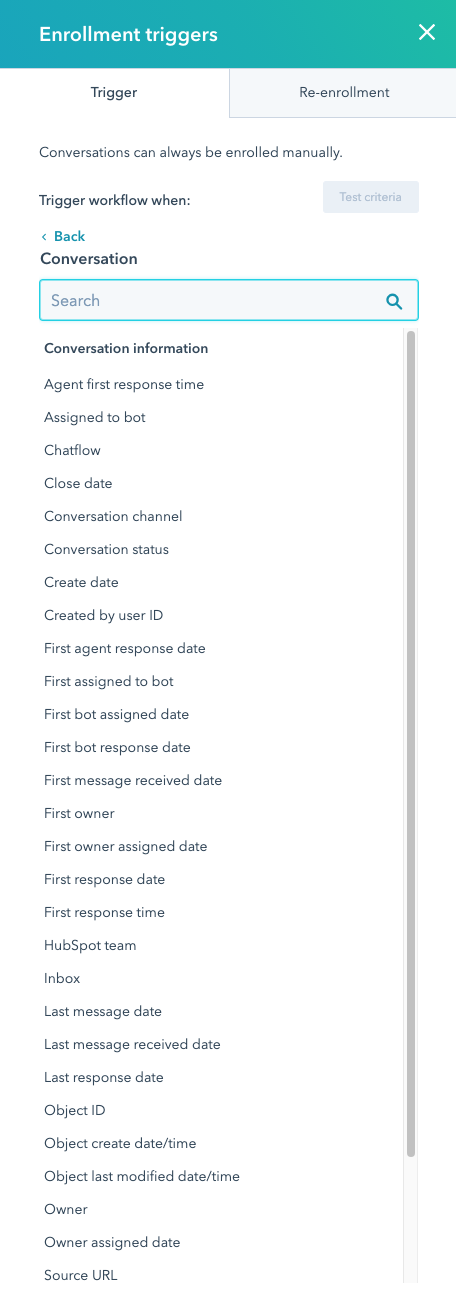
Eg you can trigger based on a specific conversation channel:
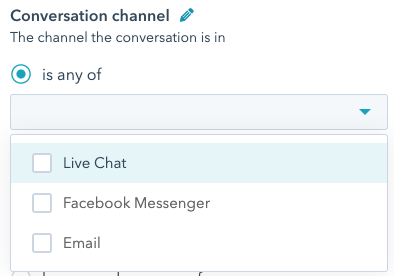
We haven’t played with this fully yet - will report further in future episodes.
(One quick thing I noticed - you can’t set Goals in Conversational Workflows)
If you are wondering if you can change the URLs for files from the default f.hubspotusercontent20.net domain, the answer is yes.
This is managed in the Website > Pages > SEO & Crawlers settings:
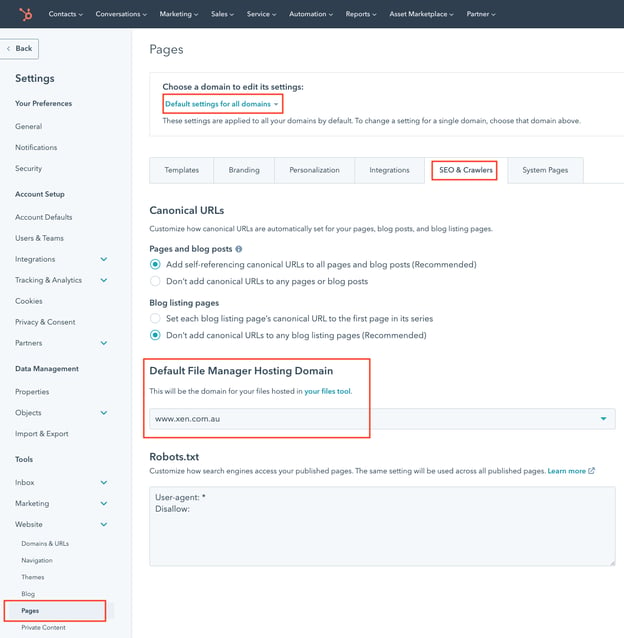
Unfortunately you can’t set this per domain - it is a global setting.
If you are running multiple brands you can’t set different file URL domains per brand.
This has been one of the most talked about and adopted features recently by our clients.
One thing to note is that you need to have the number in international format for it to work. So like you see below where it gives you the option to update the number and save it before calling.
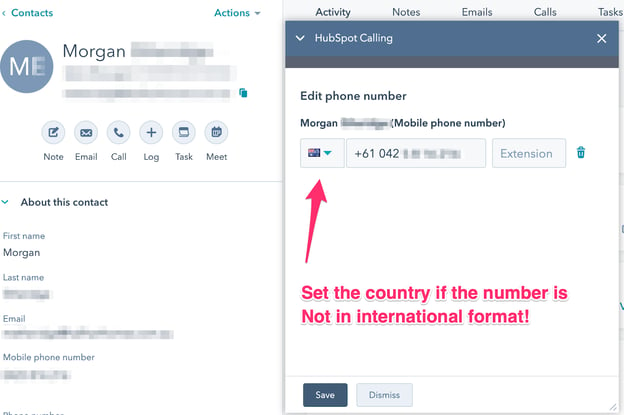
There is an idea in the Ideas Forum which we would love you to upvote here.
Having the ability to quickly select call outcome and type can help you understand the types of calls and their success.
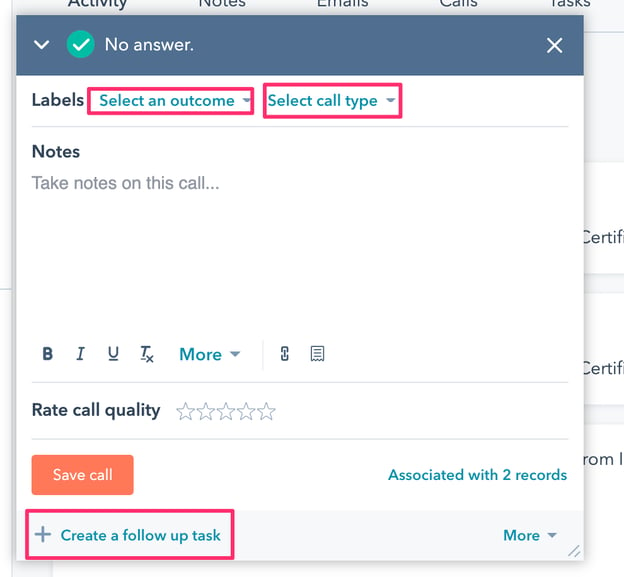
Lastly the ability to create that follow up task inline is 🏆.
Pro tip: have a call queue so you can improve your workflow and increase productivity.

This has been insightful to understand how people are feeling about their phone interaction with sales team members. Especially useful when you have a potentially long sales process.
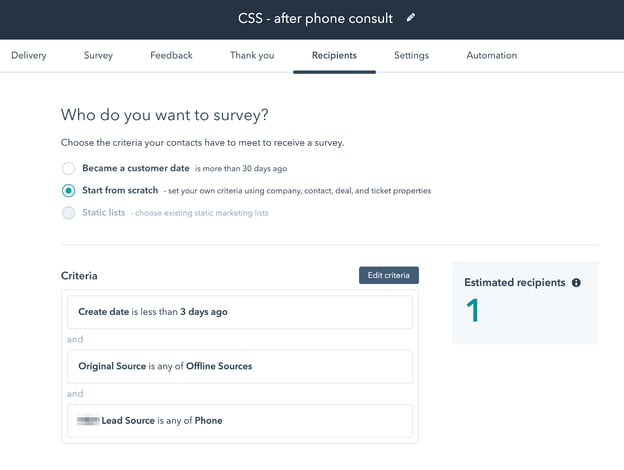
We had someone leave the business and their ID was used to connect to Asana to create tasks. This however failed once they left as their user was no longer active on Asana.

Tip: make sure you review workflows connections to other systems monthly/quarterly and have a process in place to make sure this does not happen!
An example of packaging changing the perception of a product (via Tina Donati on Twitter)

(Note: Not necessarily suggesting this is or will be successful - rather, just highlighting that it changes your perception of the product)
When starting as a junior marketer, you initially focus on following a set of tasks - without much understanding of their context, or when why you are doing them (eg prepare this report, post this on Facebook, prepare a weekly newsletter, check negative keywords in Google Ads, etc).
Part of maturing into a senior marketer is understanding the reason behind why you are doing these marketing activities. Understanding the context, and ultimately the outcome.
When you understand the desired outcome you can make informed choices - you can be proactive.
Think about the marketing you are currently doing for your company or clients. Do you understand the goals behind these activities? Do your team?
Via the HubSpot product updates blog.
This time a year ago HubSpot was just about to launch the Enterprise version of CMS Hub (and thus rebadging the current CMS as Professional version).
BTW no new product updates on the blog since 11 February 2021! And yet, so much new stuff released this month.
Undraw is a continuously improving set of open source illustrations - super useful:
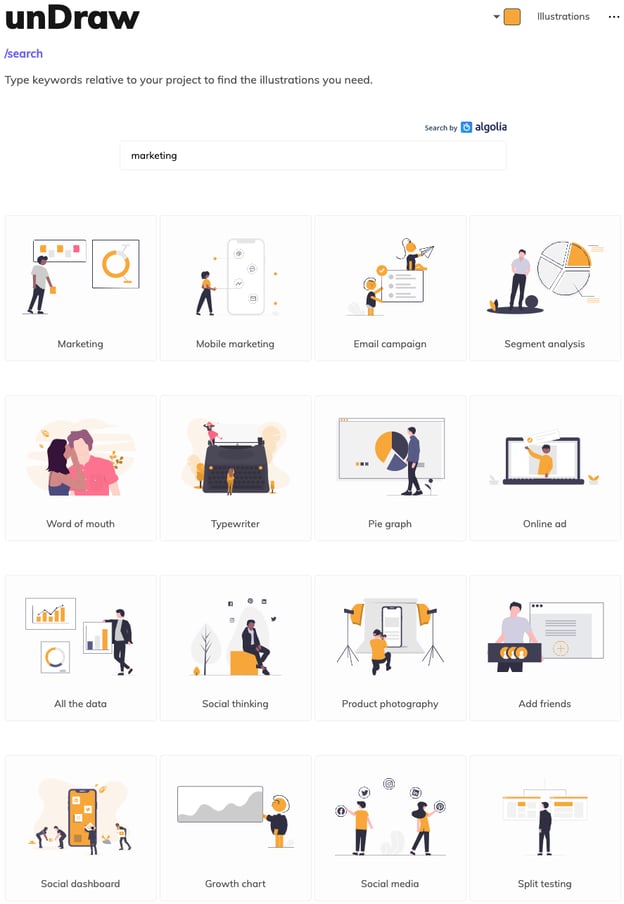
And so easy to use - you can set your brand colour in the top right and they automatically all update.
Here’s an example after I searched for podcast, and used HubShots brand colour:

Rand blogged about zero-click Google search behaviour - finding that 64% of Google searches result in the user staying on Google and not clicking through to a web site (either via organic or paid result).
One key item of interest: Zero click searches were much higher on mobile than desktop (77% on mobile versus 46% on desktop)
Google responded (in a slightly disingenuous post) that Google is pushing more clicks than ever to websites (something that Rand’s post also mentioned) - but the post was widely criticised for not clearly indicating that they simply have more searches than ever (and thus more clicks).
The key point remains though that a lower % of the searches are making it through to websites (ie the dark grey section in the graph below is increasing).
Rand had a follow up thread on Twitter here.
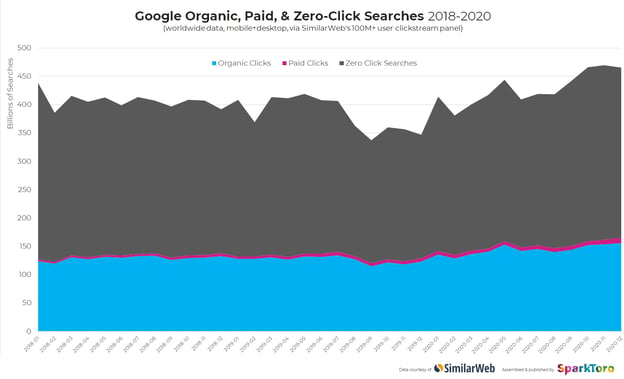
“You don’t rise to the level of your goals, you fall to the level of your systems.”
James Clear - Atomic Habits
Aleyda has a useful thread on Twitter discussing favourite SEO tools
As a final note related to our discussions around the Facebook News debacle in Australia which we chatted about in episode 236 in February, it’s pretty clear that Facebook and Google won, along with of course News Corp and Nine Entertainment.
Alan Kohler in The New Daily has a final washup.
Disclaimer about The New Daily: they are funded by Australian Superannuation Industry players, so be aware of that in some of their finance related writing. Other than that they are a good source of news in Australia.
Digiday comments on the reduced targeting capabilities with lookalike audiences and remarketing due to Google’s tracking changes.
To summarise: the focus will change to prospecting and loyalty campaigns. With prospecting you’ll be targeting more on search campaigns, and with loyalty you’ll be focused on building repeat customer relationships and incentivising referrals.
My take: Expect to see a massive growth in referral systems - especially around newsletters and apps.
As always: consider Amazon - their Prime membership is the best example of a loyalty program built years before most others were considering loyalty as anything more than flight mileage programs...
Benedict Evans discusses the focus of technology in (predominantly) retail industries and highlights that the questions to ask aren’t technology questions - instead they are product and distribution questions. For example, when asking why Netflix is bigger than Hulu we don’t focus on compression quality and bandwidth (ie technology questions) we focus on content and release questions, and the user experience. These are product questions, not technology.
His point is that this is now the norm - everyone has grown up with technology, software and infrastructure - these aren’t the questions to be focussing on. Instead, ask the product and delivery questions.
Consider this in your marketing strategy - are you still getting bogged down on technology (important, yes, but not the main focus) at the expense of product, user experience and delivery?
There’s been a ton of excellent memes in light of the Suez Canal fiasco.
This one from @berudenotto2 struck a chord with me:

What’s your favourite?
Connect with HubShots here:
Connect with Ian Jacob on LinkedIn and Craig Bailey on LinkedIn
HubShots, the podcast for marketing managers and sales professionals who use HubSpot, hosted by Ian Jacob from Search & Be Found and Craig Bailey from XEN Systems.
HubShots is produced by Christopher Mottram from Podcastily.
Please share this with colleagues - it helps us improve and reach more marketers.
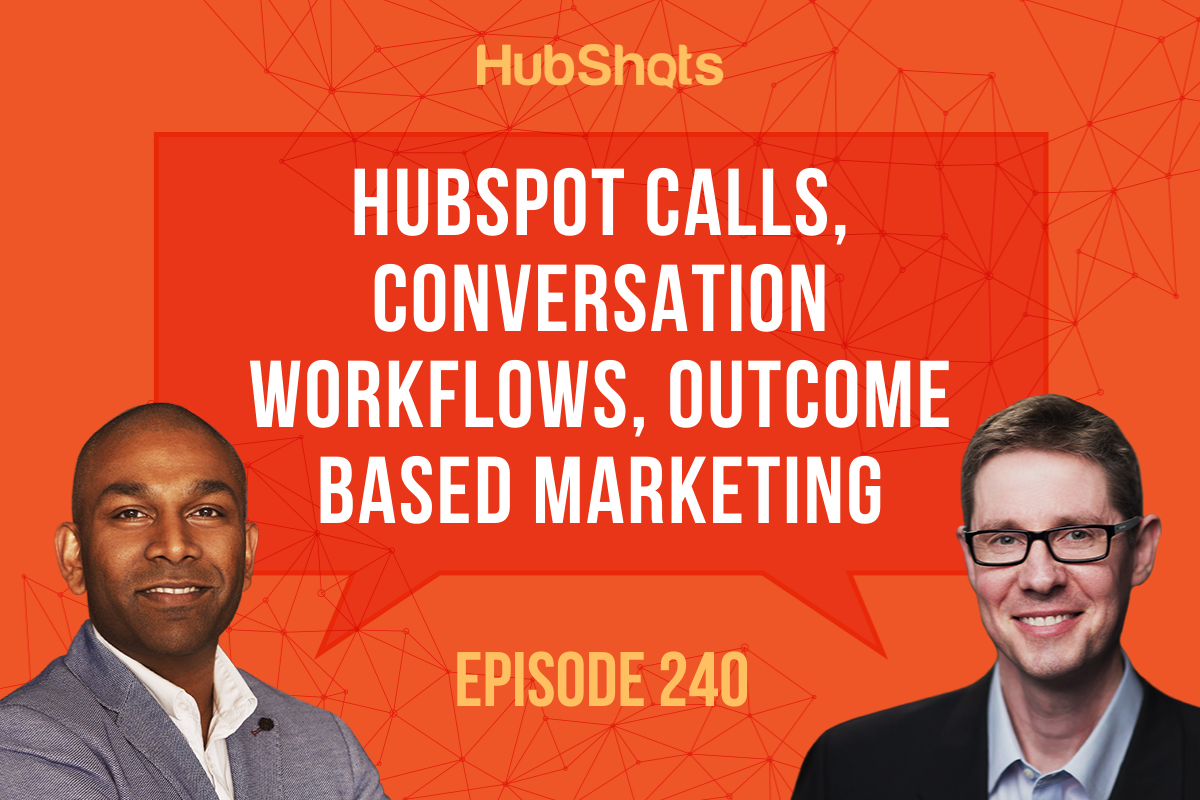
- Hi, everyone, welcome to HubShots episode 240. In this episode, we talk about HubSpot calls, conversation workflows and outcome-based marketing. You're listening to Asia Pacific's number one HubSpot focus podcast, where we discussed HubSpot tips tricks and strategies for growing your sales, services and marketing results. My name is Ian Jacob from Search & Be Found, and with me is Craig Bailey from XEN Systems, how are you, Craig?
- I'm well. And good to see that Brian Halligan is on the mend also.
- That's right.
- Seen his Twitter update, where he explained how he's had 34 screws added in various places in his body, this is part of his recovery and getting him fixed up after his snowmobile accident, which we, of course, chatted about in episode 238 a couple of weeks ago, which had a nice pun by the way, which didn't get anywhere near the response I felt it deserved, but we need to do some promotion, Craig.
- We need promotion for that.
- But you know what, and this is, I'm looking forward to having Brian back.
- Good thing that we have Brian, and yeah, looking forward to returning.
- Now, this is, as you mentioned, there is a HubSpot 28-day Marketing Challenge, and it's something that we're working on, and it should be ready in early April, for our first cohort in May, Craig.
- That's right, I'm looking forward to that, and we did talk about in the last episode, but basically, a work with you, guided work with you challenge to get a campaign in HubSpot and in market in 28 days.
- That's right, so you gonna be using HubSpot marketing professional and be willing to do the work for it to work.
- We've talked about recharge versus consistency, Craig.
- Now this is a little bit of me just kind of justifying the fact that we take weeks off here and there, 'cause we took last week off, I needed a week off for various things, and so I took a break, but this is going to be a bumper episode, because Easter is coming up and you're actually away, and we're not gonna record, we originally think, oh, we should try and record two, and then, do an Easter special and all that, no, we're just going to do a bumper episode.
- That's right.
- This one. But it got me thinking about this whole idea of consistency, 'cause you know, we do try to record every week.
- Yes.
- And be consistent. But I think sometimes it's good just to have a break and recharge rather than force through, and perhaps, not deliver quality. So that's my justification, I don't know. I kind of alternate, no, we should be consistent, keep it going, but then I'm like, no, I've just got to stay healthy.
- I like the consistency, and I think, you know what? It is a balance, that's what it is. And listeners, if you haven't already signed up to the show notes, you've got to get this one, there's a great little meme Craig's put in there.
- I'm gradually improving the show notes every week, and you helped me trying to put the images, funny things.
- That's right.
- Insightful things, nice screenshots, yeah, trying to really add value. So we're really trying to increase our subscribers to the show notes, please, sign up and please, recommend us to your colleagues.
- And thank you to those who already recommended us and signed up, we really do appreciate having you on our mailing list. All right, we've got some quick shots of the week, Craig, and here's some of notice, HobSpot's customer report builder is now officially live.
- It's been in beta for forever, I actually didn't realize it wasn't live, we've been talking about it on the show many times, well, it's actually live now, Ian.
- I know, it's surprising, that is a regret surprise to me, Craig, but hey, what do you know? All right, and then HubSpot has added a new workflow type called conversation workflows, and this is another example of how a community request, back in 2018, is making its way into the full product feature.
- Yeah, look, this looks promising, and essentially, what it is, is being able to trigger workflow based on say a live chat being initiated, or a Facebook messenger message coming in, or maybe one of the support form emails. Full disclosure, I haven't actually worked a lot with it, I've got a few screenshots in the show notes just about started playing with it, but I haven't worked in detail. One thing I noticed on conversation workflows is they don't have goals, which is interesting, you can have suppression to drop people in and out.
- Yes.
- But not goals, like normal contact workflows, but anyway, we'll dig more into that, just mentioning it as a quick shot this week.
- And then, finally, you now have the ability to submit a forecast, if you're looking at your sales forecasting, and this is something that we are trying out with all our customers, Craig, and I'm sure you are too. And you know what? I'm loving the wholesale side of the system.
- They've really done it well, haven't they? And it's just incremental improvement it seems. By the way, and we'll cover this later in the show when we talk about the throwback of the week.
- Yes.
- Have you noticed that the product updates blog hasn't been updated since mid-February?
- Really?
- Yeah, I don't know.
- I didn't know that.
- Whether they decided that's not a worthwhile channel to use, but there's been so many releases in March, and in fact, just in the last week or two, for product updates, heaps of things.
- And listeners, if you're thinking, where are these product updates? Actually, inside the tool, if you click on the top right-hand side where your name is, and you look for a menu item called product updates, you'll see it in there, so that's being updated, but obviously, not the product blog, which is very interesting, so there you go. All right, onto our HubSpot marketing feature of the week, Craig, and this has to do with setting the domain to use with HubSpot file URLs.
- All right, I'll just explain this in case people are wondering, you know how you upload a file, HubSpot files, and then, you go and share the link to it? And it'll have some F.HubSpot user content document, blah, blah, blah, URL, and you think, oh gee, I don't like that, I wish I could just make it my domain URL. Well, of course you can, I hadn't realized this for a while, and by the way, it's not as though I went, oh yeah, I definitely wanna use those ugly HubSpot URLs. What happened was I was just inserting files, so we've got a capability PDF.
- Yes.
- I just insert to about page to my client, and I actually realized that, oh, hang on, why isn't it just using our domain URL.
- Correct.
- Anyway, you have to go and set it, I've got a screenshot, it's in a website settings pages, SEO and crawlers settings, which is not particularly intuitive, but then, there's the default file manager hosting domain, got a screenshot there, you can set it. Unfortunately, you can't set it per domain, so this is on the older Mayan Cisco, of course, we've got multiple brands in our portal, I wanted to actually have, you know, the file you are off per domain, you can't do that, but so we've set it to our main one, so there you go.
- Now, listeners, if you don't have HubSpot as your primary, if HubSpot is not using your primary domain and say, you've got sub domains, like you've got Info Act, Yo Business or LPR Yo Business, you're gonna have to choose one of those, right? Make sure that it's appropriate for what you're doing, when you select that. All right, onto HubSpot sales pitch of the week, Craig, and this is about HubSpot calling.
- Isn't this getting fantastic reception from customers?
- It is and it's being adopted by a lot of our customers and clients and I know even the same for you, even we're using it quite heavily internally. Now, that's the best part.
- Yeah, let's talk about the good and the bad, there's really good things.
- Now, the not so good thing at the minute is that if you don't have the international number format for the number that you plan on calling, it's gonna tell you you can't do it and it's gonna pop up the screen, where you can actually edit it and choose the country, which is fantastic, so I love that bit, and you can save it and it'll update the number. Obviously, you want to make this on a whole account-wide basis, that's a different story, right?
- And there's the gotcha.
- So we called HubSpot support today and we thought, maybe there's something that we don't know about, anyway, there is nothing that we don't know about.
- Hey, just a quick shout out to HubSpot support, 'cause that was very quick.
- It was.
- Jump on or give me a call, couple of minutes, I fellow gives me a call, so yeah, sorry.
- And they actually had a look prior to giving you a call, which is fantastic and they mentioned there is, actually, a community item which spans back again, I think, since 2018 or even before that was saying it would be good to have the number prefix as a default. So we put a link in the show notes to go and upload it because it's definitely worth it.
- They're gonna have to.
- They will.
- Now that they're really promoting this, and it's rolling out, people using it in anger, so to speak, this will be a key frustration for lots of people, so I'm pretty sure you'll see that come into the product quickly, upload it.
- Yeah, upload it, absolutely. The next thing I wanna talk about is having the ability to once you've actually had the done the call, to select the call outcome and the type, and this is really around helping you understand the types of calls and the rates of success. So if, for example, sometimes we say takes seven calls to get through to somebody, we can actually understand, is it taking seven or it a lot less? And the better the data, the better the outcome. And finally, the one that all the people in sales are actually loving is that little crit, the follow-up task, that's just below that, that just does it for you, or not just does it for you, but it just makes it simple in that single screen to make it happen, and to carry on to your next task. Now, here's a little pro-tip for you that I have discovered in my travels around is if you can create a task queue, so in your queues, create a task queue, make sure you're assigned to that, or your team is assigned to that. You can actually input all of the call tasks into their queue and you can run through that queue in a sequential manner, getting all your calls done first, and then moving on to your other tasks. So I've been recommending people do call queues, or like their top priority queue, then, they've got an email queue, then, they've got a to-do queue. And some of our customers have admin queues, where people in admin have to do certain things like post packages or follow up because it's a bounced email, and that's where those tasks end up in, but it's a great way to use and block your work.
- I think this is really good and one thing that I just wanna highlight is if you're a marketer and you might be thinking, well, let's say you're an agency, and you're thinking, oh, this is just for sales team. Sure, it is for sales team, but this is also your account management team, which, okay, theoretically, it's part of sales, but no, it's actually part of delivery. So it's almost part of service hub in a way that you think, oh, that's where this should be, but we're using it for account management, of course, a little bit of sales, but account management and here's where the big value is.
- Absolutely, so I encourage you all to have a look at and if you don't understand it, there is contextual help within the system, so I encourage you to have a look at that and work it out, because I think it'll save you a lot of time and a lot of heartache.
- All right, next onto our HubSpot service section of the week, Craig, and you know, how I love getting feedback using service Hub. And this is one that we have implemented for a customer of ours and it's to get feedback post a phone consultation, and this really started, I guess, a year ago, when they were doing more consultations over the phone, and just really trying to understand how people are feeling post that conversation, because it's not a short conversation, it's potentially, a 15-minute to 30-minute conversation, because they get a lot of data, because they wanna give designs back to people, understand where the house fits on their block, et cetera. Why this has been good, is just helps us understand how sales are interacting and are people actually getting value out of that session. In the show notes report, how this gets triggered is that a contact was created less than three days ago, their original source is offline, and we collect individual lead sources on this client, and we say the lead source was a phone call. That's how the criteria that triggers off this customer satisfaction survey, and you know what? Looking at it definitely gets people, giving them feedback, which is fantastic, and then, or somebody responds appropriately if it hasn't met the requirement. All right, onto the Hub gotcha of the week, Craig, I got caught with this one and this is a workflow failure when connecting other systems like Asana. When we originally created workflow and connected to Asana using one of our customers logins, they left the business and they're disabled Asana login, but the workflow is still running and failing on that last step , we had to create an Asana task, and then, of course, I got a call saying, hey, what's going on? We're not getting any tasks coming through. And then, I discovered we needed to reconnect with a new user to utilize the task feature. Now I think, I mean the period that we originally did this to the period today, it might've changed slightly, or become a bit more robust where you can connect multiple users with a login to the system, but at the time when we connected it, you could only have one login from HubSpot to Asana.
- Yeah, that's funny. But quite often for logins, we have a generic, so services at Zen or Info Act.
- Yeah.
- For these kinds of connections, but this is the problem, is not like when you have personal logins and they are responsible for the connection.
- Correct, and I guess the error is not very descriptive, it says an unknown error occurred, and that is what happens, there you have it. So I think the tip here is make sure you're reviewing your workflow errors and your systems that you're connecting to on a monthly or quarterly basis.
- I think this is a really good point, I don't think I've ever checked workflows for errors.
- Oh.
- Yeah. So I wouldn't think to, unless, I noticed, or happen to think, ah, I haven't received any notifications on that recently, but yeah, that's not a good, that's not scalable, that's not a good process. Yeah, I think that's a really good checklist, every month.
- Correct.
- Gotta check the main workflows for errors. So what happened in this case, the workflow just got to an error and then it just finishes?
- Correct, it finishes, yep.
- So the contact is not kept in the workflow, they actually finish the workflow.
- Yes, that's right.
- Just that action.
- That action that's taken place.
- Yeah.
- Yeah.
- All right, market tip of the week, Craig, perception is everything.
- Alright, I saw this on Twitter, I thought this was great. Someone's created special packaging for different types of pasta. Again, you've got to see the show notes to see the screenshot, but it's really good, I'll just describe it.
- It's very good.
- So it's made of silhouettes of, in this case, women's heads with hair, and so the spaghetti is like straight hair, it's kind of, the packaging has a see-through, so it's got a picture of a woman's head,
- Head.
- But the hair is see-through, like just clear through to seeing the pasta. You kind of got to see it to understand what I mean, but it's really effective.
- Very clever.
- It's very clever.
- Now my point isn't, oh, this is gonna sell buckets, 'cause I don't know what the sales results are, I don't know if people look at that and go, oh, that's ridiculous and don't buy it, or whether they go, oh, this is great and they do buy it, that's not the point. The point is, it stands out from all the other pastas, and I think people might've seen that one, have you seen the one with nuts in it? It's like big gum cheeks of a squirrel in the packaging outside.
- No.
- I'll try to find that for next time. But my point is perception is everything, when it comes to differentiation. And so, how do you stand out? How do you do something different? This is kind of wacky, I think it will work for them, I don't know, but I think it will. How does your marketing stand out? And we've chatted about this.
- We have.
- And currently, this is on my mind, how do we differentiate in not only a useful way, but a fun way? And here's just an example to, I guess, get the creative juices going.
- All right, onto insight of the week, Craig. Outcome-based versus task-based marketing.
- I think this is a really useful framing for marketers, so I'll just set the context for our agency. We're only a small agency, but I hired four new people around February, onboarding them at the moment, and they're getting up to speed. And what I've realized is that just about anyone, unless you're particularly senior in a role, these a more junior roles, you tend to just, naturally, adopt a task-based mentality. So we're doing marketing for clients and for ourselves, sure, so there's tasks and we have checklists, we're actually quite good at processes, I gotta thank Tara from our team, she's done amazing job with all our processes and Roslyn implements them, and she created this whole four-week onboarding thing for new staff, it's really good, right?
- Yeah.
- But they're all processes. And everyone in the team, they're very task based, like, I follow this checklist, I do this. And what I've realized is there's gotta be this change where it's not task based it's outcome based, where they see the destination, rather than just the steps in front of them at that particular moment in time. And I think this is part of maturity for marketers, and perhaps for marketing managers as well, managing a team, so I wanted to raise the stakes as part of onboarding. One of the things when you have a whole bunch of new people in the team is, of course, they detract from you, because you've got to onboard them and answer questions, that's natural and they're getting up to speed. So actually, what happens very short-term, chaos kind of actually happens because your capacity goes down because you're getting new people up to speed.
- That's right.
- Quality can get missed, because you're kind of distracted and sometimes, clients will complain. Now we actually have this full, you know, I'll be upfront about the mistakes we make, you know.
- Trust me, I've heard that too, Craig .
- So we've actually had two separate clients say, what's going on? You know, quality's dropped, and I'm like, oh yeah, I've dropped the ball down kind of thing. Anyway, I was chatting with the team this last week, I was like, okay, what's happened? The quality has changed, why and how can we stop this? Or how can we fix this so it doesn't happen again? I realized that some of the mistakes are being made or the quality actually they're not mistakes as such, the quality drops is because these people, that new team, they don't understand the outcome. They don't understand what we're trying to achieve for the client, in fact, they don't even understand what the page is sometimes, let's say they're coding up a module in HubSpot or some piece of like, they don't even know what it's for, so therefore, they don't know what to test on, so context is not there, the outcome hasn't been made clear. And so, I really wanted to highlight this to listeners and especially marketing managers, looking after a team, maybe in an agency as well, don't fall into that trap that I did, but make sure you give them the outcome. Now what we're doing with the team as we're kind of saying every piece even if it's a design brief for a client, we might do a mock-up problem, little wire frame like, here's the outcome we want, and here's why, here's the goal. Is it brand awareness or is it a lead gen form? Is it, whatever, I've got a bunch of other examples in the show notes, but I just thought that was really important, it's a lesson I've learned, just in the last couple of months and maybe that'll save a bit of time for our listeners as well.
- Talking about that, Craig, when you were sharing before one thing I was sharing with you is that, I was observing people, as clients we've worked with, as teams have changed, new leaders have come on, I've just observed the difference in when somebody, like the head of the sales team really takes on HubSpot, takes on the ideology of how this can help them, and help them with their sales, help them be better, help them be more efficient and just how they drive people to be better and to make things better, was really interesting, because sometimes people just wanna get stuff done, they just go, oh, I just wanna get through my tasks or I want to just get that done, I don't wanna hit another button if I don't have to. Whereas, when you come from a perspective of, hey, this is really there to help me, and if I can understand the client better, if I can do the right action at the right time, if I can use sequences at the right time, if I can use the snippets to make my speed of response quicker, if I can standardize templates that people are not rewriting things all the time and we have a standard response, all of these things cumulate to a massive change, and a massive difference in the business. And I've just noticed this, it's like stark contrast between just doing a task and really understanding the why and utilizing what's there for them.
- That's such a good example. And it's the difference between this is an individual tool that allows me to do my job versus this as a platform that allows our team to be more efficient and grow, and therefore, the business to grow.
- All right, Craig, now, what was the HubShot throwback of the week?
- You know that we're just about to launch a year ago? Enterprise CMS Hub.
- Wow.
- Can you believe it's a year, it feels like so long ago. And of course, as part of that they relabeled CMS Hub as CMS Hub Professional.
- Correct.
- But then, enterprise was the new one, yeah, that was a year ago.
- Wow, how time flies, Craig, all right, we've got a resource for the week, Craig, UnDraw.
- UnDraw, have you seen this? It's a set of open source illustrations, you've got to check it out, I got a few in the show notes.
- I tell you what, looking at the show notes, it looks fantastic.
- It's really good and you can set your brand color, and then, you do a search show, and then, I've got another example, I just searched for the term podcast, I set the brand color, the HubShots brand color, and then, I've put it in the show notes one of the examples, that's really nice.
- It is nice.
- And you can just use these illustrations anywhere, drop them into presentations and web pages, and things like that, yeah, really nice.
- All of these things I see it's just really, how do you speed up the delivery of something, to get a really good result, and that's what these tools are doing for us.
- All right, so that was the first resource of the week. Second resource of the week, did you see Rand Fishkin's post?
- No.
- On zero click Google searches? So it caused a little bit of controversy in the SEO world.
- I'm surprised at that.
- On Twitter, which is really the only social that I consume, Rand Fishkin, of course, former founder of Moz.
- Yes.
- But now, he's got another company SparkToro. Anyway, he did analysis based on data provided by SimilarWeb looking at the clicks in Google's search results, and how many of them are what they call a zero-click search, which means they went to Google search for something, they didn't end up clicking out of Google off to a website, so they just stayed basically within Google, and that's been increasing percentage wise.
- Yes.
- And in fact, looking at some of the results, zero-click searches on mobile were about 77% of Google searches on mobile, zero-quick search, they don't go off to a website. Desktop was better, it was 46%, but really, 64% or two thirds of all the searches on Google result in zero clicks off to a site. So it's, you know, whether you think that's expected or not, it's quite significant, because a lot of people think, oh, we rank organic, we get their traffic, no, Google gets most of the traffic, stays there. And so, he published his findings, which I think is just interesting in itself, so it's a resource to go and look. Google responded rather disingenuously , and they caught a bit of criticism for this, where they didn't even address Rand's posts, but they aimed it, I think, at Search Engine Land or another site.
- Yeah.
- Who was kind of using those stats.
- Using that, yes.
- And making their own commentary on it.
- Which Search Engine Land does a lot.
- Yes, and they pushed back saying, no, the number of clicks that people have been getting has been increasing. And it was disingenuous, because it didn't really address Rand's point which is zero-click searches as a percentage have been increasing, and they just replied and said, well, as an overall total, they have been increasing. And of course, when you've got a bigger pie, then of course, your slice of the pie, even if the slice percentage wise is smaller, the overall size of the slice is actually bigger. So sure, there's more clicks going out to people, but a smaller percentage of the overall clicks. So an interesting resource there, I think, worth knowing for marketers for a couple of reasons, one, so they understand what zero-clicks searches are. And then, of course, there's a whole lot of work that people do around snippets to make sure that they do get the results in Google, so maybe you do get a bit of brand association or your answer result, you don't get the click anyway. But just understanding that, and yeah, just being aware that organic still is useful, because the other way to look at it is, well, of the billions of searches, 33% are still going out to websites.
- That's right.
- There's still a lot of traffic to be had.
- Correct.
- And when I haven't put this in the show notes, but the actual amount of paid, was actually very small percentage. People say, oh, there's so many ads, the ads take up everything, actually, the percentage of clicks that go to ads is very small, you know, just a couple of percent compared to the 30% of organic clicks still going. So it's still very worthwhile SEO, and overall, is growing in total volume, even if the percentage of available clicks is reducing.
- Now, one thing I do want to say, Craig, is that I often sometimes catch myself and think, well, observing how I'm traveling through search results, and especially, on mobile device, I tend to find lots of new things that they're testing. So I've sent you a couple of times some interesting screenshots of, you know, searches that I'm doing and the results I'm getting, and I'm like, is that what they're doing? And I'm always interested to see and just be observant of my behavior with search and how I consume content. And I think you're right, it's like, there are times when I'm like, I need that quick answer, I might not necessarily click somewhere, but I'm asking a question or I'm trying to decipher something, so I just take one of the snippets, or I see the answer right up and then I move on, and there are times where I really delve down deep into going what I wanna see. So even like, I usually do it on a Saturday morning, or maybe on a weekend because I cook, and I'll be searching for certain recipes, and I go through, I look at reviews, then I go and I find the recipe. Now what is annoying sometimes with this recipe sites that I find, there's so much advertising, and I've got to scroll down way to find the ingredients, or they've put some of the guff at the top, I'm like, this is so annoying, right?
- They tell you their life story on, where they're living and what that recipe.
- That's right.
- I just want a recipe, thanks.
- I just want to have that recipe and I wanna make a nice meal and I wanna carry on, but it just goes to show it's like, if they're putting up all of these barriers to people engaging with content, right? And getting what they want, then, Google will start stripping that and showing it at the front, right? So I can get my recipe, I know what ingredients, I know the method, I know where I go, I don't have to go through all that guff to get there. So there's another good example.
- That's an example of where staying on Google, actually, does help you. You know what I've been finding lately, because I am using search on mobile a lot more, which sounds odd, well, of course everyone is, yeah, but I've still found the mobile experience frustrating when I click through to sites and I saw, actually, I do a lot of my, I think I still do the majority of my buying on desktop, I'll give you an example. The other day I wanted a high quality leather, four-ring binder.
- Yeah.
- Four-ring binder with high quality leather, you'd think that's a pretty simple thing that Google could give you results and that people would buy. No, and I was looking through the shopping ads, I think the results are really bad and I don't know if it's just shopping or just Australia, but I find that the shopping results are very broad, it's kind of like they're matched poorly, so it's a bad experience. And so, I'm probably continually refining my search, I get longer and longer to try and find and get some shopping results that actually match. And then, quite often I am clicking through to the site, to go to these sites, and then, using their own search on their sites, 'cause like, maybe that's a starting point, it's very frustrating. So I just mentioned this because my behavior, I'm finding I'm doing lots of clicks, and lots of searching and I'm a frustrated user, I haven't been getting a good experience, I find.
- So let me ask you, when you're doing a search, are you actually clicking the shopping tab at the top, after you've done the search.
- Yeah, yeah, quite often.
- And then, looking through the the shop results?
- Yeah.
- Yeah, okay, that's interesting.
- Yeah, and it's surprising the amount of times I'm ending up on Etsy products these days.
- Really, wow.
- Etsy, yeah. You know what, I expect Google will pull back on that, you know how we used to get lots of eBay results?
- Yes.
- And then, Google was like, we want you to pay more. I don't know that facts, I'm just, you know.
- You just made a deduction there.
- I just, I'm just, hmm.
- Shooting the breeze?
- I'm shooting the breeze, yeah. Etsy, lots of Etsy results, I reckon Google is gonna clamp down on Etsy shortly, because, yeah, we're ending up on Etsy. You know where I end up, not so much on purchase decisions.
- Yeah?
- But research decisions?
- Yep?
- Pinterest, we've mentioned this a year ago.
- Really?
- The number of results that are Pinterest results, yeah. Even if you look up memes.
- Yeah, you did.
- Like the one I've got at the start, normally, that used to go after those meme generator, and things like that, which is where I wanted to get to.
- Yeah.
- Now I'm ending up on Pinterest.
- Great.
- Pinterest has done such a good job.
- They have.
- With the new CEO. And yeah, I'm sure Google will pull back and try and downplay that in the future, but yeah, interesting how those experiences often lead.
- Listeners, I wanted to say, understanding all of this, if you're in a business and you're looking at how people are utilizing your site and utilizing search results, I really think it's very important that you even, we're going to the point of sometimes saying, hey, let's talk to 10 best recent contacts, and ask them a bit about how they found us, and how did they travel through the site. To get it from a user perspective about what their frustrations might be, but how they're also, utilizing search and understand that journey, because I think the better we understand that, and just being able to address one or two minor frustrations could make a massive difference to your business. Don't be afraid to pick up the phone and ask a few questions, or even, give them something for their time to understand a bit more, because, if that's your ideal customer and you can get that, just imagine how many more ideal customers you can get in front of. All right, Craig, the quote of the week.
- From James Clear, "You don't rise to the level of your goals, you fall to the level of your systems."
- Wow, how appropriate.
- Hmm, key, I think. Insight from his "Atomic Habits" book, which I read, I'm gonna say a year or two ago, when it came out, I want to read it again, that's one of the books that I have in my canon I call my Canon of like 20 to 30 key books.
- Yes.
- That I will just keep reading and rereading.
- Yeah.
- "Atomic Habits" is one and this was a key insight from it. And in mindful, I also when I talked about outcome versus task paced before, if you didn't even have systems and checklists would be terrible onboarding people, but yeah, get them into the systems, but then, an outcome destination mindset.
- All right, we've got lots of bonus links in the show notes and it's a big shot take, right?
- Yeah, that's right, some articles from Digiday around Google's changes and targeting worth reading, I've got a few of my comments there. And then, a really good one from Benedict Evans, talking about the right questions to ask, couple of years ago people would ask, what's the technology to use here and what do we do? And his point being, no, that's all changing, software is no longer the discussion, so he gives the point, people say, when they talk about Netflix, they don't say, what's their compression algorithm? Is that better than, you know? The reason it's better than Hulu is not because of the technology questions people are asking, what's the bandwidth? It's like, what's the content that I can get? What's the user experience?
- Correct.
- These are all product questions.
- Yes.
- It's a long post he writes and I've got a few of my comments there in the show notes, well worth reading.
- Actually, talking about practice experience, Craig. I just wanted to ask you, so listeners, I love cars, and I'm trying to convince Craig to get a nice car. And one of the things he mentioned to me a few weeks ago is he got the opportunity to drive a friend's Tesla model three, and I think your perspective or your experience has totally changed what you expected or believed a car to make you feel like, right?
- Oh, absolutely, and I'll give some context on this.
- Yeah.
- So, listeners, I drive a 20-year-old car, no, that's probably 22 years.
- The mighty, mighty Astra.
- The mighty, mighty Astra, right? And for various reasons, one, I just walk to work, I hardly drive ever, right?
- Unless you come to see me .
- Unless I come to see you, it's like, one of the times I drive so, hardly do any kilometers and I kind of, I'm not a car lover like you, so a car to me it's not an asset, you know, it's a liability kind of thing, so I've put off, and you know, I like nice things, right?
- Yeah, you do.
- But cars I'm like, ah, you know, I don't wanna spend money on that . I drive this Tesla and, oh, my goodness, I want a Tesla. I'm just like, the experience was so good. And I know when I drive in your car, because you've got a very nice car, I'm like, ah, the experience is good, but yeah, the Tesla one was quite remarkable, I was not expecting it.
- That's right, now you mentioned a few key things to me was how comfortable it made you feel. I think that was a really interesting comment you made to me.
- Yeah, so I've driven some, well, some performance vehicles lately, at your encouragement. But I'm always, I'm sweating when I get at the end.
- Yes.
- I'm like, oh, I'm so nervous. The Tesla, I did not sweat, I was so comfortable, I was just comfortable almost immediately, it was remarkable, quite remarkable.
- And I think that's the thing, right? It's the whole experience of the drive or the experience of that product, essentially, somehow thought about very well.
- Um-hum.
- That's made you feel so much at home and at ease, when you're in the car. So listeners, if you haven't driven a Tesla, I would actually encourage you to go drive a Tesla.
- Or don't, because you might end up spending a lot of money .
- And if you end up buying one, jus let me know, I'll send you my a referral link.
- I got a referral link, there we go.
- I don't have a referral link, Craig.
- Oh, okay.
- But, I've actually seen people on YouTube where they have bought Teslas or they've made so many referrals from people buying Teslas, because they own one, and they talk about it that they would to buy another one because of the referral.
- Oh, really, so what's the referral thing here?
- I think if you're an owner, it used to be, I think, they gave a certain path, or maybe free charging, I don't know what it was, but it was something pretty decent at the time, I don't know what it is now, but something were well worth looking into.
- You know what, speaking of referrals, and we didn't cover this, but I jumped over the Digiday article in big shots of the week.
- Oh, yeah.
- Make sure you go and read this, listeners. It's in the show notes, sign up at hotshots.com/subscribe. And actually, one of the things I talk about there is my take on it is we're gonna see this explosion in referral-based systems. I'm not talking about the old affiliate models, I'm talking about referrals like the Tesla one, but also a whole lot of email newsletter referral systems, I think they're going to grow because well, for us, newsletters is one of those key channels that we own, and so we're going to look at that as well, but always consider loyalty programs and on that piece I guess, Amazon Prime is the perfect example of a loyalty program with benefits taken 10X. Most people you talk about loyalty program, I think about some airline mileage program or points?
- Yeah.
- Amazon prime has just been a perfect example of it done really well.
- All right, listeners, thank you for listening. We hope you have a good week and you have a productive week. And our encouragement is that take one thing out of these show notes and implemented in your business and you all will be all the better for it.
- And until next time, Craig.
- Catch you later, Ian.
- Hey there, thanks for listening to this episode of HubShots, to get the latest show notes, HubSpot tips and marketing resources, sign up at HubSpots.com. You can also book time with us to help you grow better with HubSpot.
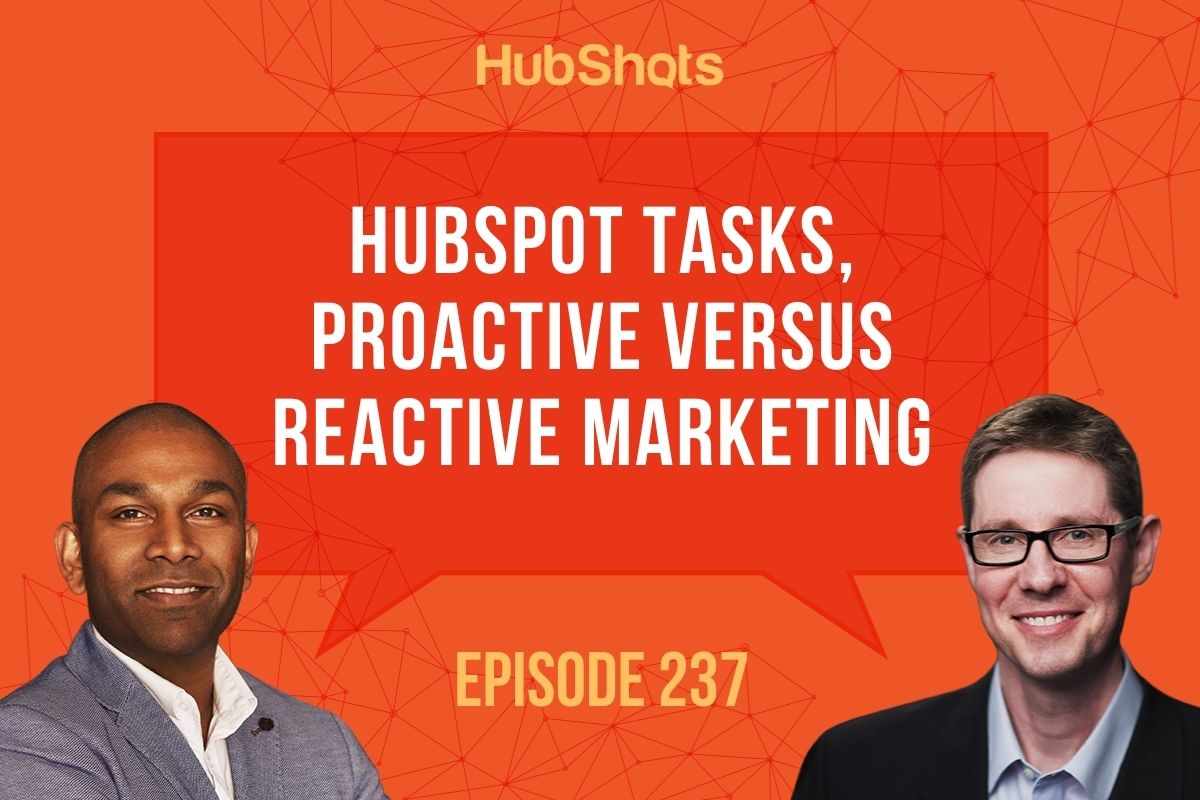
Welcome to HubShots Episode 237: HubSpot Tasks, Proactive versus Reactive Marketing This edition we dive into:
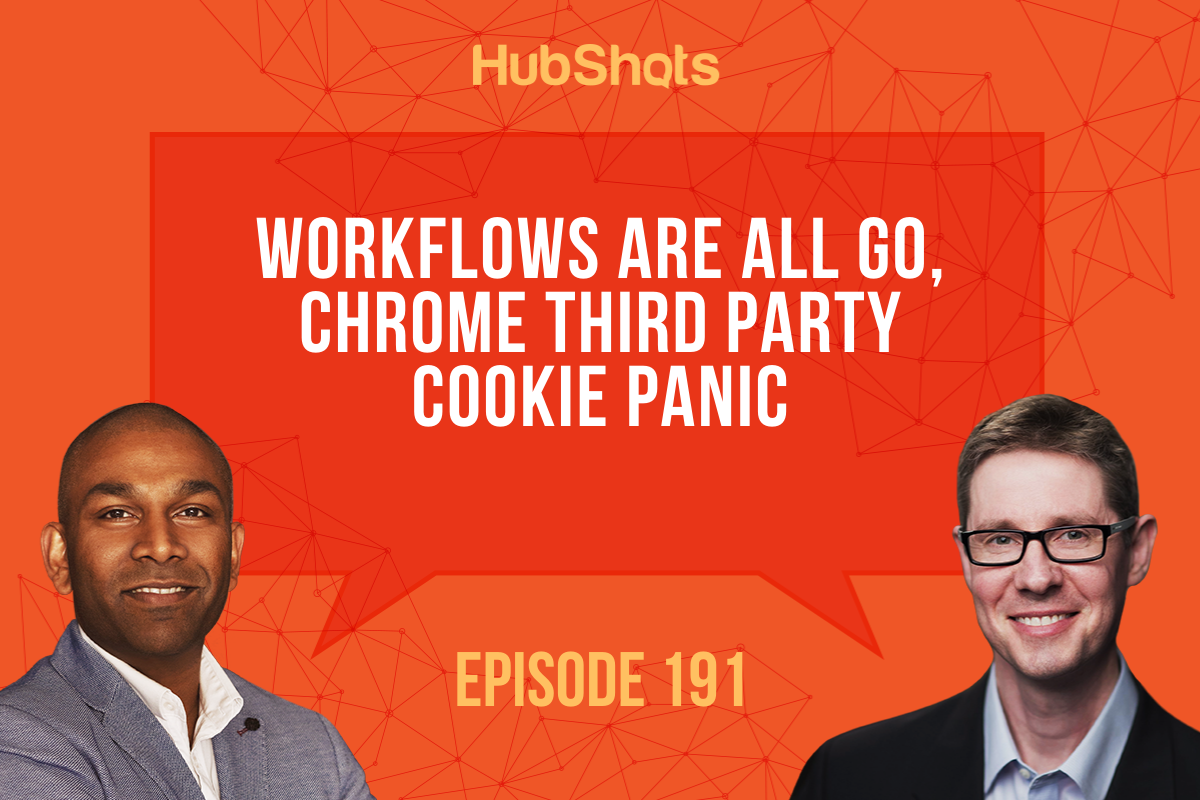
Welcome to HubShots Episode 191: Workflows are all Go, Chrome Third Party Cookie panic
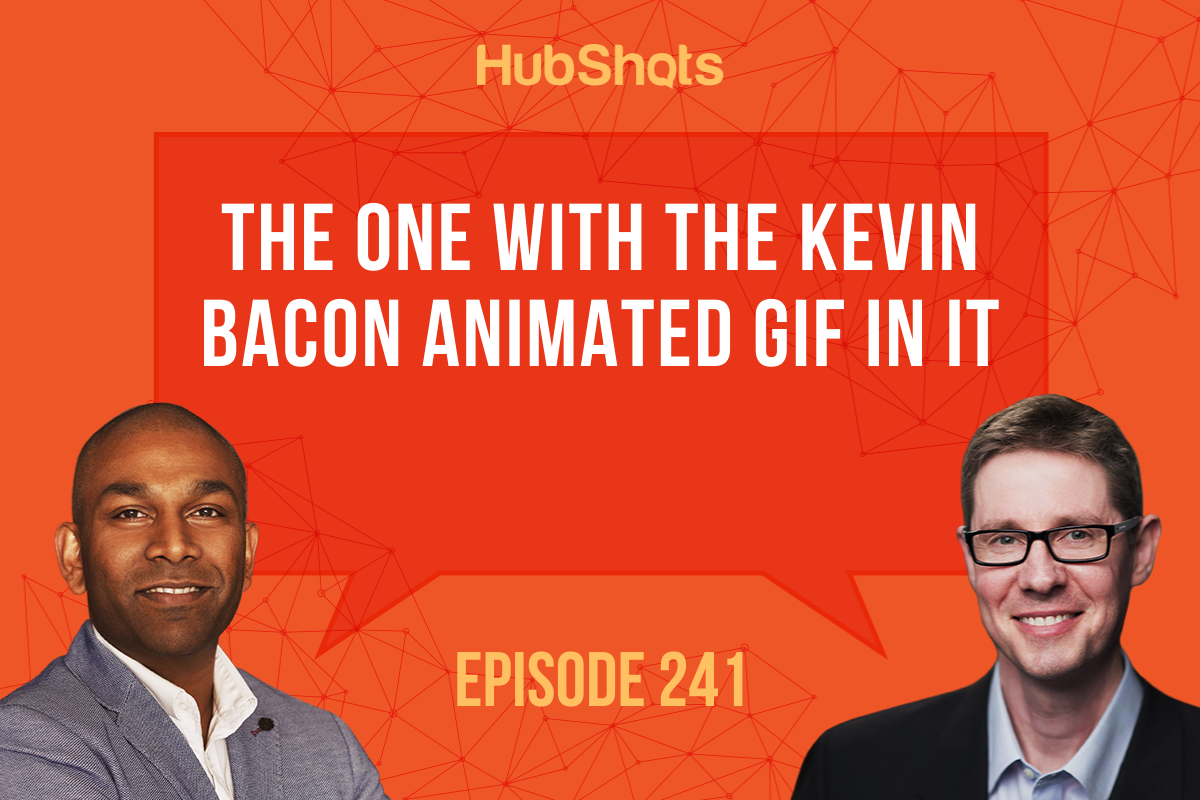
Welcome to HubShots Episode 241: The one with the Kevin Bacon animated gif in it This edition we dive into: